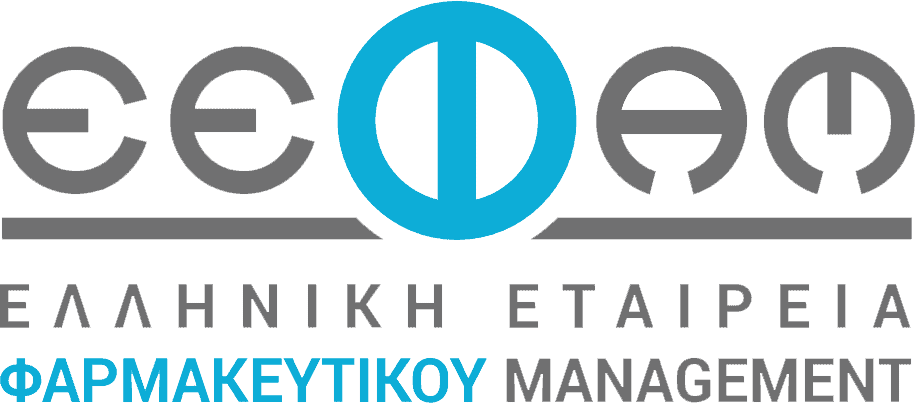Blog
Blog
Global Economics Intelligence executive summary, March 2024

Despite global uncertainty fueled by geopolitical and economic concerns, consumption among surveyed economies is holding up strongly, except in the eurozone. This is encouraging given that consumer confidence globally looks somewhat downbeat, with the OECD indicator trending below the long-term average and dipping downward. That said, consumer confidence in the majority of surveyed economies is oscillating just below the average, while Brazil is more positive. Consumer confidence in Brazil has reached its highest level so far this year and is 4.0 points higher than in March 2023. Confidence rose 1.6 points to 91.3 in March, from 89.7 in February, though remaining below the neutral 100 mark. The US consumer confidence index (Conference Board) fell to 106.7 in February, down from a revised 110.9 in January.
Meanwhile, US retail and food service sales climbed to $700.7 billion, a 0.6% increase from January’s $700.2 billion. The Society of Indian Automobile Manufacturers’ March 2024 data shows a decline in auto sales for February, down –5.7% versus the prior month to 370,786 (393,074 in January)—auto sales are a proxy for retail sales. In Russia, retail sales have stayed virtually unchanged for several months. Private consumption is expected to remain the main growth engine in coming months, driven by increasing incomes.
Overall, looking at the trend in consumer spending habits since the global pandemic, it is worth noting that, while spending has rebounded post-COVID-19, around a quarter of consumer spending categories remain below their December 2019 levels.
A rosier picture is painted by the latest McKinsey Global Survey on economic conditions.1 Respondents have increased confidence in the economy—both globally and at home. Notably, respondents share much brighter assessments of both the global economy and conditions in their own countries than they did at the end of 2023. Views of the global economy are the most positive they’ve been since March 2022 (Exhibit 1) and, in the majority of regions, respondents also have a more hopeful outlook on domestic conditions despite enduring concerns over geopolitical instability and conflict.

However, in a year packed with national elections, executives are concerned about political uncertainty—increasingly viewing transitions of political leadership as a primary hazard to the global economy, particularly in Asia–Pacific, Europe, and North America. They view policy and regulatory changes as a top threat to their companies’ performance, and they offer more muted optimism than in December about their companies’ prospects.
Consumer inflation eased to around 2–3% among advanced economies (Exhibit 2) and producer prices remain subdued. In the emerging economies, inflation remains under control despite increasing inflationary pressures. In the US, the consumer price index rose 3.2% (annualized) in February, slightly higher than the 3.1% for the 12 months ending January. By contrast, eurozone headline inflation fell slightly to 2.6% year-over-year in February, down from 2.8% in January. The UK surprised forecasters as the consumer price index fell by more than expected to 3.4% in February, its lowest rate since September 2021.
Exhibit 2

Among the emerging economies, India’s headline inflation was unchanged at 5.1% in February. In Brazil, inflation fell slightly to 4.50% (4.51% in January), registering a fifth consecutive month of reduction, to touch the upper limit of the central bank’s target inflation range (4.5%). It’s a different story in Russia, where inflation has continued to accelerate in recent months: consumer prices rose by 7.7% year-over-year in February, reflecting tightening capacity constraints.
Looking ahead, inflation expectations have edged up but remain within the 2.0–2.5% range.
It’s a mixed picture for commodities: precious metals and livestock are surging, with gold growing steadily into March, while agricultural prices are declining and other commodities are generally stable. A recent uptick in oil prices can be attributed to reduced stocks, while other energy-related commodity prices are trending down. Base metal prices have been moving sideways for more than a year. The cost of food around the world continues to ease but remains close to 20% above prepandemic levels.
Interest rates were once again largely unchanged, with Brazil being the exception. On March 20, the Central Bank’s Monetary Policy Committee decided to cut the Selic rate by another half a percentage point, to 10.75%.
In terms of GDP, Europe is underperforming compared with many areas. During the last quarter of 2023, eurozone GDP remained stagnant, marginally up by 0.1% on both the prior quarter and the same period in 2022, according to Eurostat flash estimates (meaning that 2023 as a whole saw growth of 0.6%). Moreover, UK real GDP is estimated to have fallen –0.1% in the three months leading to January 2024, versus the three months leading to October 2023. Services output showed no growth during this period, while production output fell –0.2%. In Russia, monthly indicators for January suggest that growth in economic activity has slowed. Meanwhile, India’s real GDP growth surged to a six-quarter high of 8.4% in the third quarter of the 2023–24 fiscal year, while China’s government has set a GDP growth target of around 5.0% for 2024.
The global purchasing managers’ index (PMI) is seeing manufacturing growth return in many places, while services are gaining momentum. In the US, the manufacturing PMI rose to a 21-month high of 52.5 in March (47.9 in December), while India’s manufacturing PMI reached a five-month high of 56.9 in February 2024, up from 56.5 in January. However, the eurozone and UK manufacturing sectors are continuing to contract on the basis of weak demand. February’s composite PMI for the eurozone edged up to 49.9, from 49.2 in February, to record a nine-month high. The manufacturing PMI fell marginally to 45.7, from 46.5. The UK manufacturing PMI strengthened slightly in February, posting 47.5 (up from 47 in January)—now below the neutral 50.0 mark for 19 successive months.
By contrast, the services sector expanded across all surveyed economies in February, with India the standout performer across January and February. In India, the services PMI moderated to 60.6 while still indicating robust expansion. Brazil saw its services PMI climb to 54.6 in February, from 53.1 in January, hitting a 19-month high, with new business increasing at the fastest pace since October 2022. The UK’s services PMI registered 53.8 in February, down from 54.3 in January but remaining in the expansion zone for the fourth consecutive month. In the US, the services PMI rose to 52.3, while the eurozone’s services PMI was up to 51.1 from 50.2, a nine-month high.
Unemployment has been growing moderately in recent months. The all-India unemployment rate was 8% in February, up by 1.2 percentage points on the previous month. In Brazil, the three-month moving average unemployment rate slightly rose to 7.6% in January (7.4% in December), up for the first time in 12 months. Meanwhile, China’s overall surveyed urban unemployment rate has increased for three months in a row, to 5.3% in February (5.2% in January). The youth unemployment rate climbed to 15.3% in February (14.6% in January). The US saw February’s unemployment rate rise to a two-year high of 3.9%. The UK unemployment rate was estimated at 3.9% in the period from November 2023 to January 2024. Perhaps more significant for the UK is a 21.8% economic inactivity rate for those aged 16 to 64, higher than estimates of a year ago (November 2022 to January 2023) and also up on the latest quarter. Russia’s situation is somewhat different, with unemployment at an all-time low for the post-Soviet era (3% in December 2023), driven by negative population growth and emigration—around 900,000 people have left the country due to the war in Ukraine and mobilization of reserves.
Most equities indexes showed gains for investors in February and March, with China an exception. The Shanghai stock index lost −0.7% and the Shenzhen index lost −1.2% in value by March 27 compared with levels at the end of February. Volatility eased across multiple assets, including gold, oil, and the euro-dollar exchange rate outlook. Government bonds continued to follow recent months’ upward trend, with the exception of those in Brazil, China, and India.
World trade has been slowing, though US exports were $0.3 billion up from December, at $257.2 billion; January imports were $324.6 billion, $3.6 billion above December’s imports. The total deficit climbed 5.1%, to $67.4 billion. In China, cross-border trade slowed in February. Exports growth decelerated to 5.6% in February (8.2% in January) and imports growth fell to −8.2% in February (15.4% in January). In February, Brazil’s balance of trade registered a surplus of $5.4 billion, with exports totaling $23.5 billion ($26.9 billion in January) and imports reaching $18.1 billion ($20.5 billion in January). Among surveyed economies, the standout is India, which saw merchandise exports reach $41.4 billion in February 2024 (an 11-month high) to register 11.9% year-over-year growth. Merchandise imports expanded further to $60.1 billion, with year-over-year growth of 12.2%. The merchandise trade deficit widened from $16.5 billion in January 2024 to 18.7 billion in February as imports outpaced exports growth. In some ways, it’s business as usual for Russia: preliminary Central Bank of Russia figures indicate that Russia’s current account surplus recovered in January from a December dip. Its current account surplus has averaged around $5 billion in recent months, roughly the same as in an average month during 2017–18.
United States. The consumer price index rose 3.2% (annualized) in February, a slightly higher increase than the 3.1% for the 12 months ending January. Core inflation was 3.8% (annualized) in February. The January 2024 Survey of Consumer Expectations from the NY Fed shows that one-year-ahead inflation expectations were unchanged at 3.0% after reaching the lowest level recorded since January 2021.
Eurozone. During the last quarter of 2023, eurozone GDP remained stagnant, marginally up by 0.1% on both the prior quarter and the same period in 2022, according to Eurostat flash estimates. That means 2023 as a whole saw growth of 0.6%. Even though economic activity has stagnated, some forward-looking indicators point to a pickup in growth further ahead.

United Kingdom. The UK Consumer Price Index fell by more than forecast to 3.4% in February 2024, its lowest rate since September 2021, mainly driven by a slowdown in food and restaurant price inflation. Core inflation, which excludes items such as energy, food, alcohol, and tobacco, fell to 4.5%—down from 5.1% in January. Services CPI also declined but remains elevated, at 6.1%.
Among emerging economies, China presented a mixed performance; India’s PMIs are buoyant; Brazil cuts interest rates again; growth slows in Russia.
China. The slowdown in the real estate market continued during the first two months of the year. On the demand side, floor space sold in new residential properties declined −28.6% (−25.8% in December), and average new home prices dropped −1.6% (−0.9% in December). On the supply side, floor space fell −30.6% across January and February combined (−13.3% in December).
India. The purchasing managers’ index (PMI) for manufacturing reached a five-month high of 56.9 in February 2024, up from 56.5 in January, supported by rising investments in technology, efficiency gains, and sales growth. The services PMI moderated to 60.6—though it still indicated robust expansion. The services sector accounts for more than 50% of India’s GDP.

Brazil. The Central Bank’s Monetary Policy Committee decided on March 20 to cut the Selic rate by another half a percentage point, to 10.75%. The Committee reinforces the need to persist with a contractionary monetary policy until the disinflationary process consolidates and inflation expectations anchor around the Committee’s targets. Inflation expectations stand at 3.5% for 2024. The Committee emphasized that progress in the easing cycle will depend on inflation dynamics and signaled further reductions of the same magnitude going forward.
Russia. Monthly indicators for January suggest that growth in economic activity has slowed. Manufacturing output and retail sales have remained virtually unchanged for several months, while the long stretch of construction growth appears to have ended in January. Private consumption is expected to remain the main growth engine in coming months, driven by increasing incomes.
McKinsey’s Global Economics Intelligence (GEI) provides macroeconomic data and analysis of the world economy. Each monthly release includes an executive summary on global critical trends and risks, as well as focused insights on the latest national and regional developments. View the full report for March 2024 here. Detailed visualized data for the global economy, with focused reports on selected individual economies, are also provided as PDF downloads on McKinsey.com. The reports are available free to email subscribers and through the McKinsey Insights app. To add a name to our subscriber list, click here. GEI is a joint project of McKinsey’s Strategy & Corporate Finance Practice and the McKinsey Global Institute.
ABOUT THE AUTHOR(S)
The data and analysis in McKinsey’s Global Economics Intelligence are developed by Jeffrey Condon, a senior expert in McKinsey’s Atlanta office; Krzysztof Kwiatkowski, an expert at the Waltham Client Capability Hub; and Sven Smit, a senior partner in the Amsterdam office.
The authors wish to thank Nick de Cent, as well as José Álvares, Cristina Barrantes, Marta Dabrowska, Juhi Daga, Darien Ghersinich, Ricardo Huapaya, Yifei Liu, Marianthi Marouli, Tomasz Mataczynski, Frances Matamoros, Jose Maria Quiros, Erik Rong, and Sebastian Vargas for their contributions to this article.
The invasion of Ukraine continues to have deep human, as well as social and economic, impact across countries and sectors. The implications of the invasion are rapidly evolving and are inherently uncertain. As a result, this document and the data and analysis it sets out should be treated as a best-efforts perspective at a specific point in time, which seeks to help inform discussion and decisions taken by leaders of relevant organizations. The document does not set out economic or geopolitical forecasts and should not be treated as doing so. It also does not provide legal analysis, including but not limited to legal advice on sanctions or export control issues.








